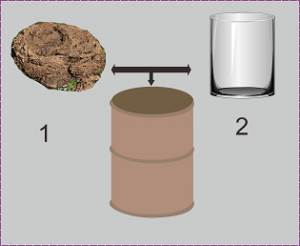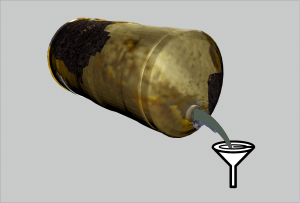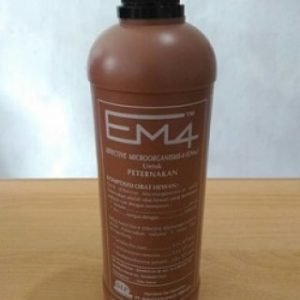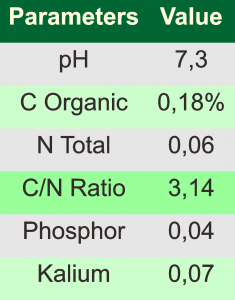Why use liquid fertilizer?
Organic liquid fertilizer is a fertilizer as in general, but in the form of liquid. It’s ingredients are also made from natural ingredients.
For example, from livestock manure such as cattle, goats, rabbits, horses, buffalo and chickens. Or, it also can be made from vegetable waste.
For the plants, actually, there is no difference between organic and inorganic fertilizers. It’s functions is the same.
The plants only need the nutrients contained in a fertilizer. Thus such as nitrogen (N), Phosphorus (P), Potassium (K) and so on.
Nitrogen from organic fertilizers and Nitrogen from inorganic fertilizers is the same right? It is certainly the same, that is just the same of Nitrogen.
What distinguishes is how the element of nitrogen is presented to the plant. And after the plants take the element, there are residuals remaining or not from the fertilizer.
If so, what’s the effect?
The advantages of this organic liquid fertilizer is macro and micro nutrients presented in the form of a solution. If this is given to the plant, it will be more quickly absorbed by the plant.
Thus, by giving and setting the right plant environment, the plant will grow rapidly.
Mostly, this organic liquid fertilizer is used for hydroponic farming. Media planting from hydroponic farming, highly supported by this organic liquid fertilizer.
For the environment, this organic fertilizer is absolutely necessary. We humans, it is also part of the environment organic fertilizer you know.
My point is like this.
The use of inorganic fertilizers, the effect is less good for the environment if used in the long term.
Residues or elements left behind inorganic fertilizers slowly but surely can make the environment less productive.
This happens with a very academic and complicated explanation. Then, the use of organic fertilizer into a hot topic discussed.
This is because other materials that are not needed by plants from organic fertilizers, can decompose naturally. So, although used in the long run, will not give any negative effects.
Standard quality of organic liquid fertilizer
Making organic liquid fertilizer is easy. The difficult thing is if you have to meet the existing quality standards.
Lots of information on the internet that shows how easy it is to make this organic liquid fertilizer.
However, it does not mean that the fertilizers below the standard can not be used. It still can be used.
It’s nutrient contents can still be utilized by plants. But, the results may be less than maximum or below the standard.
I think it does not matter even if the fertilizer we make is less quality. Anyway .. we use for our own purposes.
Except, if its purpose as a business. Customer satisfaction should be fully considered.
The quality standards for this organic liquid fertilizer are very loose. In our country, Indonesia, the quality standards are as follows.
How to make organic liquid fertilizer from cow dungs
From cow dung, organic liquid fertilizer can be made in various ways. Starting from a simple method, until that involves biological processes.
Here how it is.
First methode, make liquid organic fertilizer without fermentation
The simplest way is to mix cow dung with waters.
The comparison between cow’s dung and water is 1: 2. If cow dung is 1 kg, the water is about 2 kilos or 2 liter.
This is not a standard comparison, it still can be adjusted as you wish.
However, according to research that has been done, that is the best comparison.[2]
Then, the both materials are mixed and stirred. Stirring is not just in one or two minute. But in some hours.
Optimally, stirring is done for 4 hours. This will be quite difficult if done by hand. So, there should be other mechanical tools needed.
After that, then filtered or separated between the liquid and solid parts. The liquid, so organic liquid fertilizer while the solid becomes a solid organic fertilizer.
If you make liquid fertilizer in this way, the C / N ratio is around 17. The pH value is 7.
Good enough for both parameters. But for the amount of micron nutrients may be still lacking.
This is probably because there is no biological process in this way.
Even so, if used in plants, it turns out this fertilizer can also give a good growth influence.
The making of liquid organic fertilizer in this way has been tried on mung bean and cowpea. But, the testing time for research is not long, only in 15 days.
During that time, the growth of cowpea can be 1.8 cm / day while the mung bean are 1.79 cm / day. [2]
The weakness of this methode is that it’s hard to do without using the big mecanical tools.
The 2nd method, making organic liquid fertilizer with em4 and MOL
The second way is a bit more complicated, but easier than the first way.
The materials needed are cow dung, water and bacterial starter. If possible, can add other ingredients such as bran and sugar or molasses.
Starter bacteria that can be used is in many form. Can use EM4, MOL, Starbio and many others.
Because MOL (micro organism local) the discussion is long enough, plan will I make in separate article.
Updates continue on this blog anyway.
Therefore, I will use a simple and practical course. That is EM4.
Before use, EM4 must be activated first. How to activate it can be seen in this article.
Making goat manure compost with em4.
How to make cow manure compost with em4.
After the bacteria is active, now we can start making liquid organic fertilizer.
First of all, cow dung mixed with water. The comparison is the same as in the way 1.
If the cow dung is 50 kg, then the water is 100 liters.
Then the mixture is stirred until evenly distributed. After mixing, EM4 added as much as 1 percent.
If the mixture becomes as much as 150 liters, then the EM4 as much as 1.5 liters. EM4 that has been activated earlier.
Then added rice bran and sugar. If you have, more efficient can use molasses.
After that, stir again and kept in a closed container for 3 weeks. Every 3 days, do stirring regularly.
After 3 weeks passed, organic liquid fertilizer then aerated for 10 days.
Why should aeration?
Prior to the aeration, the pH content is very low. To raise it, we can do it with aeration.
Finally, after aerated, liquid organic fertilizers can be filtered.
The liquid part is used as a liquid organic fertilizer while the rest of the sieve, can be used as solid compost.
From the research done [3], if making liquid fertilizer as above, then the result is more or less like this.
The quality of organic liquid fertilizer according to the research that has been done is like that. Now check it, whether it meets the standards we have discussed or not.
Third methode, making organic liquid fertilizer using Sacharomyces
For better organic fertilizer results, we can follow the following method.
This time, the starter used instead of EM4, but Sacharomyces cerevisiae. This one mold is not well known to the general public.
So, it may be quite difficult to get it.
But I do not want you to get in trouble. To get this starter, you can buy it online. There are already some who sell it. But not me.
If online does not work, you can get this starter on bread yeast. (Yeast to making bread).
However, if from yeast bread, perhaps the starter obtained is not pure that mold. There may be other followers of some types of molds.
This method of making organic liquid fertilizer is more complicated. But, it is still possible to be done by the general public.
Immediately, the step is like this.
First of all, cow manure is mixed with this mold. The amount of mold is 0.2% of the amount of cow dung.
If the cow dung is 10 kgs, then it is as much as 0.02 kg or 20 gram.
Then mixed until blended. Furthermore, cow dung made compost for 1 week.
How to composting can be seen here.
How to make cow manure compost with EM4.
After the composting process is complete, the compost is extracted. This extract is done so that the nutrients needed by plants can be dissolved into the water.
How to extract it is by using hot water. The amount of hot water is 4 times the amount of compost.
If the compost is 10 kg, then the hot water is about 40 liters. Stirred and then filtered.
The liquid is then placed into a closed container while aerated for 2 months.
Completed ….
“Boiling 40 liters of water?”
If this is not a household scale anymore, it is quite difficult to implement.
But wait a minute.
Water used is 4 times is not it?
That is, if we make a liquid organic fertilizer from 1 kg of cow dung, we can get at least 4 liters of poc.
OK … then I hope all can catch what I mean.
From a study that has been done, the results of liquid organic fertilizer is as follows. [4]
The result is a little better is not it?
Conclusion
We do not need to take too much care with the quality standards set by the national standards for this liquid organic fertilizer.
For me, it is just a rule to keep consumer satisfaction on liquid organic fertilizer product on the market.
If we want to make liquid organic fertilizer, not for us to sell is not it?
So, if you want to make it, please. Just make it.
Now, just so for this article, see you next week for the next article.
 JOYNIM FARM Goat Farming, Cattle Farm, Laying Hens, Quail Farm, Gardening
JOYNIM FARM Goat Farming, Cattle Farm, Laying Hens, Quail Farm, Gardening








